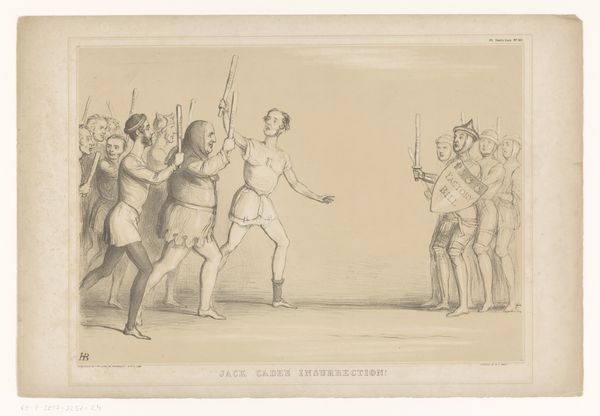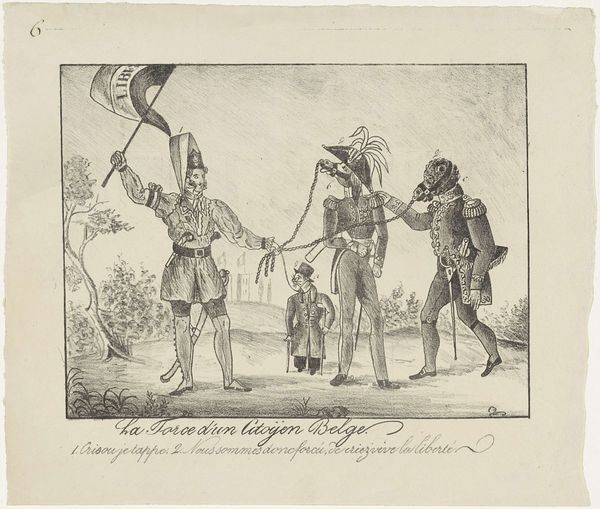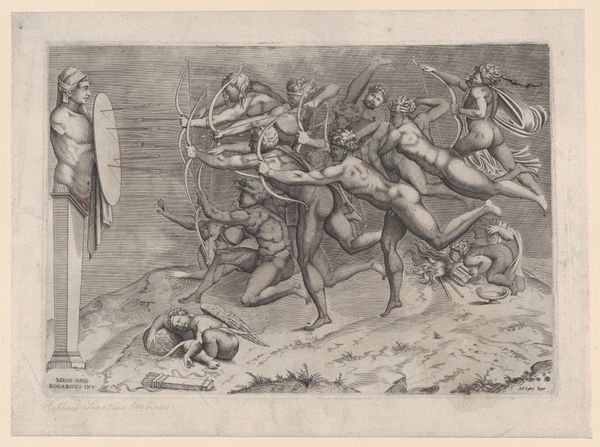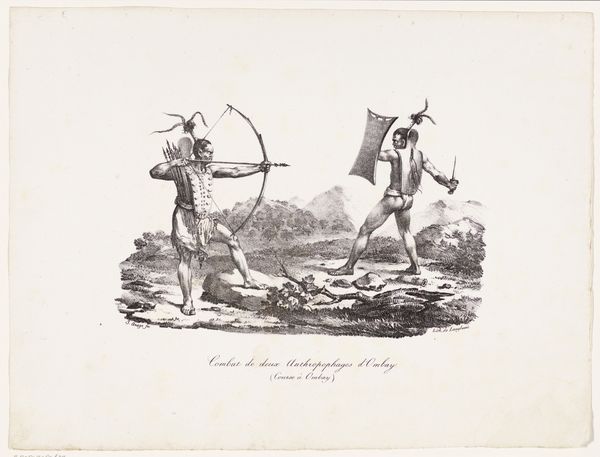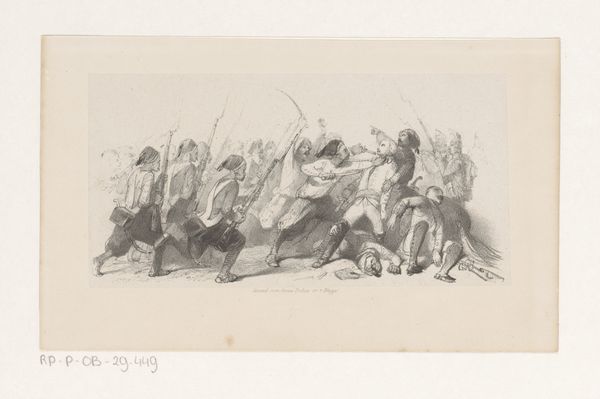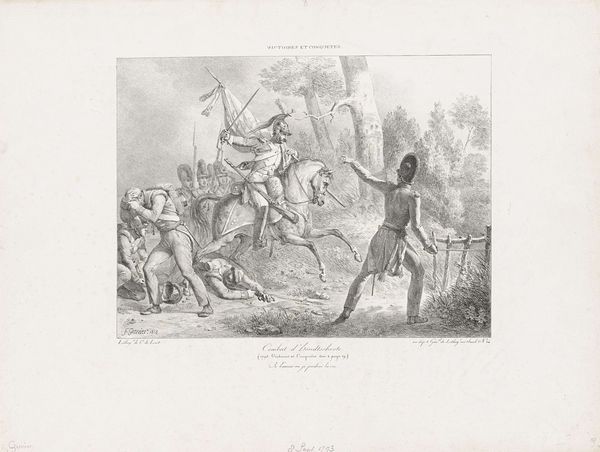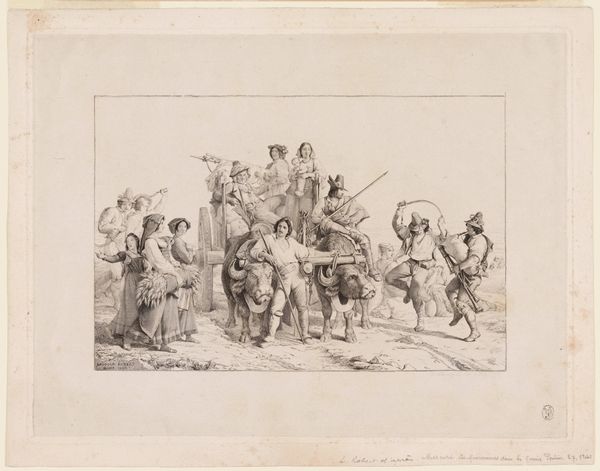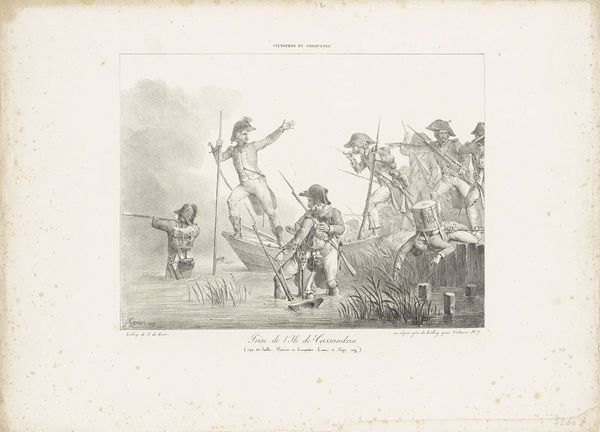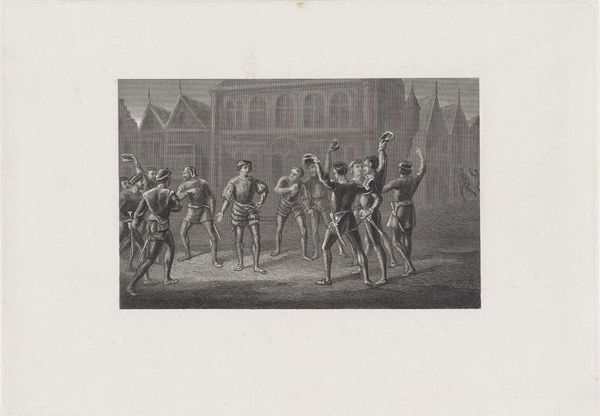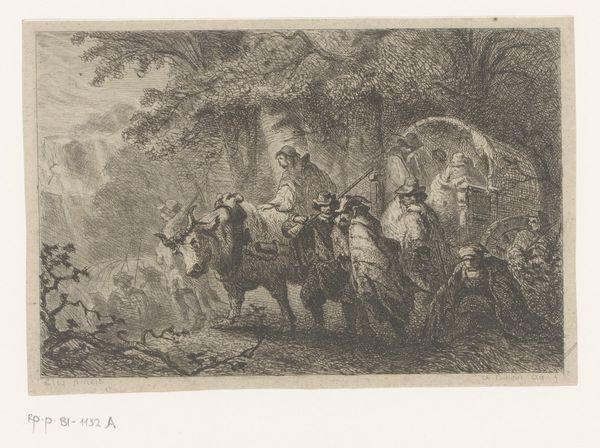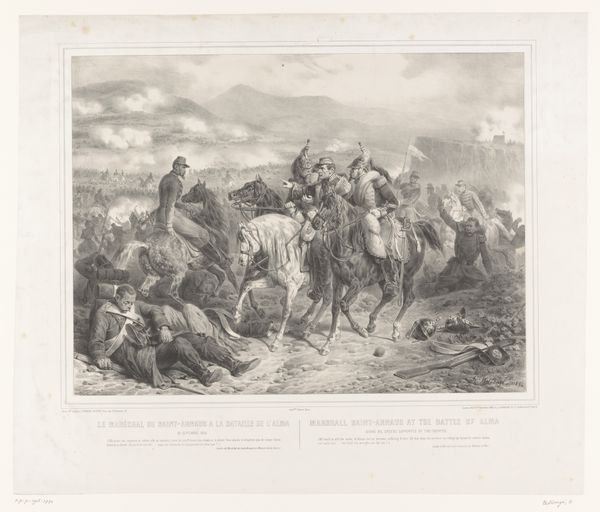
drawing, paper, ink, pencil
#
drawing
#
narrative-art
#
paper
#
ink
#
pencil
Dimensions: image: 20.48 × 30.64 cm (8 1/16 × 12 1/16 in.) sheet: 35.4 × 45.56 cm (13 15/16 × 17 15/16 in.)
Copyright: National Gallery of Art: CC0 1.0
Curator: This captivating piece is entitled "The Scalp-Dance of the Sioux," a drawing in ink on paper, created circa 1842 by Felix Octavius Carr Darley. Editor: The frenzied energy is immediately palpable. The scene pulses with raw emotion. Is it triumph or something darker lurking beneath? Curator: Darley was illustrating aspects of American life and history, often engaging with popular romantic ideals. His images gained prominence through publication in books and magazines. How do you read that within this particular depiction? Editor: The circle of dancers immediately draws me in – figures brandishing what appear to be scalps. Look at the clear visual weight put on their bodies through the inkwork. It's both arresting and unsettling. This imagery echoes the glorification and simultaneously the condemnation of Indigenous practices common in American art of the time. Curator: Precisely. The "scalp dance" was indeed a ritualistic celebration of victory, a display of prowess. The very depiction in the Romantic style lends itself to the complex racial narrative being written at the time. The glorification of nature, yet a problematic construction of Indigenous people, placing them in opposition to progress. Editor: Consider the shield at the composition's edge, adorned with feathers. It projects power and tradition, yes, but also functions as a visual boundary. Is it meant to both protect and possibly exclude the viewer? There's a clear statement about the place of an outsider witnessing this ritual. Curator: Indeed. This representation reinforces established notions of 'us' and 'them,' fitting neatly within a period where American identity was being solidified against a backdrop of westward expansion and fraught relations with Native American communities. The artwork wasn't merely illustrating an event, but contributing to the social and political landscape of its time. Editor: Knowing that, I see layers beyond the immediate action: anxiety, perhaps, about the 'untamed' West; or conversely, a celebration of an unbridled form of masculinity versus the perceived constraints of civilization. It feels complicated. Curator: The narratives embedded within seemingly straightforward historical art are invariably multi-layered. Reflecting on "The Scalp-Dance," we glimpse the intricate entanglement of art, power, and cultural identity in 19th-century America. Editor: And understanding that the image’s symbolic power continues to resonate—revealing aspects of our collective past.
Comments
No comments
Be the first to comment and join the conversation on the ultimate creative platform.

